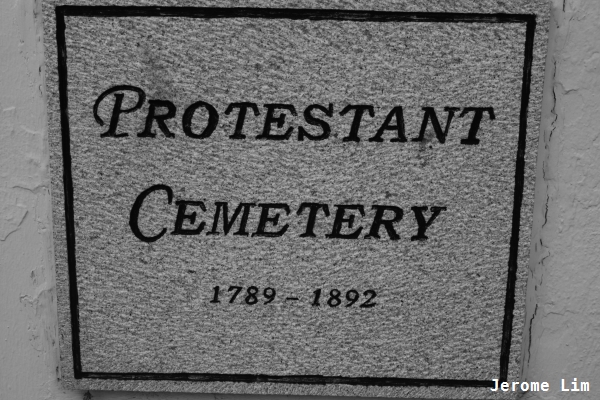There is always and element of romance connected with train journeys, especially the leisurely paced journeys of the past with which one can take in the magical scenes along the way that one can only get from railway journeys. LIFE Magazine’s Carl Mydans, a legendary photograph whose work spans several decades and includes an extensive coverage of Singapore prior to the war (see “A glimpse of Singapore in 1941, the year before the darkness fell“), took one such journey out of an independent Singapore some 3 decades later, capturing a Singapore we can no longer see but through photographs of the era. The set, also includes scenes along the journey to Bangkok, along with those captured at stopovers made in West Malaysia’s main urban centres.
The photographs of Singapore are particularly interesting. There are some of the old harbour, and quite a few of the twakow decorated Singapore River along which much of Singapore’s trade passed through. There are also several street scenes, once familiar to us in the area of North Bridge Road. A couple of quite rare shots were also taken at Tanjong Pagar Railway Station including one showing a steam locomotive of a 1940s vintage, which the Malayan Railway operated until the early 1970s. There are also images of the steam locos captured during the journey.
The photographs of West Malaysia are also interesting. The replacement of rubber trees with oil palm as a crop, which had been taking place in parts of the peninsula from the 1960s to reduce Malaysia’s reliance on rubber and tin was in evidence. This is something that I well remember from the road trips to Malaysia of my early childhood. Another familiar scene from those trips were of the padi fields, which the trunk road passing through Malacca seemed to weave through. This is something Mr. Mydans also seemed to have captured quite a fair bit of.

The departure platform at Tanjong Pagar Railway Station with a prewar relic of a steam locomotive.

Malaysian Customs Inspection at the Departure Platform.

The Supreme Court and the Padang.

Hock Lam Street.

Corner of Hock Lam Street and North Bridge Road.

North Bridge Road.
The old harbour (Marina Bay today)

View of Clifford Pier and the Inner Road, and Outer Roads beyond the Detached Mole. The view today would be towards Marina Bay Sands and Marina South.

Another view of the harbour – where Marina Bay Sands and Marina South is today. The Harbour Division of the Preventive Branch of the Department of Customs and Excise (Customs House today) can be seen at the lower right hand corner.

A rainbow over the harbour.
Boat Quay and the Singapore River

Walking the plank. Coolies loaded and unloaded twakows by balancing items that were often bulkier than their tiny frames over narrow and rather flimsy planks that connected the boats to the quayside.

A view of the stepped sides of the river around where Central is today.

Boat Quay.

Coolies sliding crates that were too bulky and heavy along the plank.

Lorry cranes were sometimes used instead.

But more often than not manual labour was used.

A view of the “belly of the carp”.
The Journey North
(with stops in Malacca, Kuala Lumpur, Penang and Bangkok)

A steam locomotive at what looks like Gemas Railway Station.

More steam locomotives (at Gemas?).

Inside the train cabin.

Train along a shunt line.

Rubber estates and rubber tappers were a common sight – even along the roads up north.

So were water buffaloes and padi fields.

Padi field.

Another view of a padi field.

Oil palms taking root. A drive to reduce Malaysia’s dependence on rubber and tin from the 1960s would see oil palms colour a landscape once dominated by rubber trees.

Another cabin view.

A break in the journey – a view of the Stadthuys Malacca.

Jalan Kota in Malacca.

View of the Malacca River.

The Arthur Benison Hubback designed (old) KL Railway Station .

Another view of the south end of the KL Railway Station – with a view also of the KL Railway Administration Building.

A southward view down Jalan Sultan Hishamuddin (ex Victory Avenue) with the KL Railway Station on the left and the KL Railway Administration Building on the right, also designed by Arthur Bennison Hubback.

The Railway Administration Building and Masjid Negara.

A view down Jalan Raja in KL with the BagunanSultan Abdul Samad on the left.

Another view down Jalan Raja in KL with the BagunanSultan Abdul Samad on the left and Dataran Merdeka on the right.

Sungai Siput Railway Station.

The Penang Ferry from Butterworth.

A view of Butterworth.

George Town – with a view towards the clan jetties.

The Kek Lok Si Temple in Penang.

Air Itam and the Kek Lok Si Temple in Penang.

What looks like the Leong San Tong in the Khoo Kongsi in George Town.

The Penang Hill funicular railway.

More padi fields.

Possibly southern Thailand.

Bangkok.

























































































































































